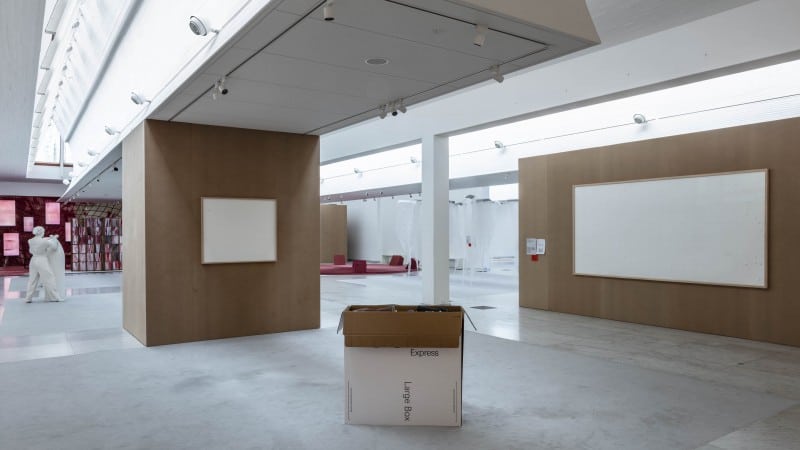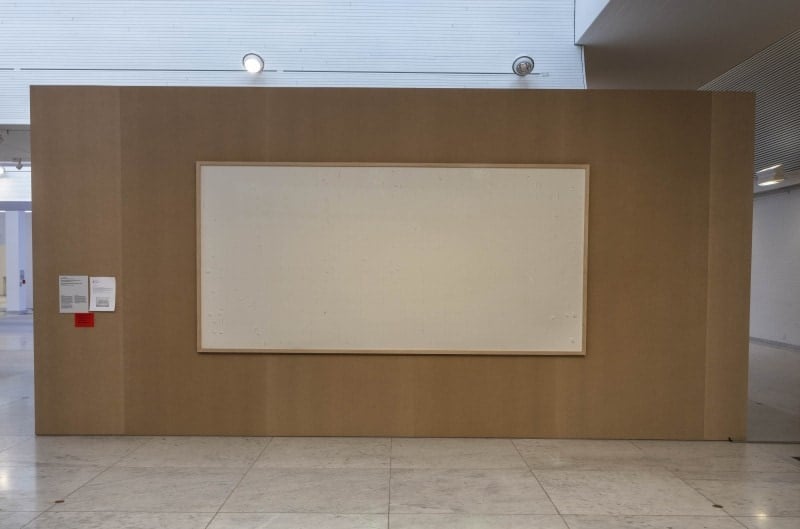Articles & Features
Take the Money and Run: The Case Rundown

After almost two years, the legal battle between the Kunsten Museum of Modern Art in Aalborg, Denmark, and acclaimed Danish artist Jens Haaning seems to have come to an end. The episode that triggered the dispute follows a string of events that reflect on the commercial value of art by placing themselves on the thin line between conceptual art and stunt – for example Banksy’s shredding of Girl with a Balloon after it was sold at auction for $1.4 million. But while Banksy’s work, later renamed Love is in the bin, went under the hammer again, selling for over $25 million, things have taken a different turn for Jens Haaning.
The Beginning: ‘Work it Out’
In 2021, the Kunsten Museum announced the opening of their new exhibition, Work it Out. Its aim was to answer some fundamental questions surrounding the nature of work and its future, addressing themes such as stress, efficiency, bureaucracy and increased digitization. In particular, the exhibition looked at the role of the individual worker in today’s society and the connections with economy, culture and politics.
The museum brought together a number of artists to contribute to this exhibition, among which were Italian-Libyan artist Adelita Husni-Bey, German artist Via Lewandowsky, American artist Josh Kline and Danish artist Jens Haaning. Each artist involved in the project was asked to contribute either a piece of artwork they had previously made that reflected the central ideas, or to create something new to fit the theme. However, when it came to receiving the artworks back from the respective artists, the museum had something of a shock when Jens Haaning’s work arrived.
Take the Money and Run
For the exhibition, Kunsten had asked Haaning to reproduce two of his previous pieces consisting of two frames displaying money. One work represented the average annual salary in Euros of someone working in Austria, while the other showed the average annual amount in Danish Kroner of someone working in Denmark. The idea behind these pieces was to show the wage discrepancies between the two countries and also to reflect on the materiality of salary: Danes earned around 328,000 Kroner (roughly 44,000 Euros), while Austrians earned 25,000 Euros.
In addition to an artist’s fee of about 40,000 Kroner (around €5,000), the museum transferred the necessary funds for the creation of the artworks (532,000 Kroner, approximately €72,000) to the artist’s personal bank account. The agreement with Haaning stipulated that he would return the cash when the exhibition closed on January 2022. But when the new pieces arrived at the museum, to the surprise of the exhibition staff, just two blank canvases were found. Haaning sent the museum an email explaining that he had decided to create a new conceptual work, different from the one previously agreed upon and entitled Take the Money and Run.

Haaning explained that to have recreated the 2007 and 2010 artworks would have cost more money than the museum had paid him. Instead, he chose to create this piece as a commentary on the working conditions and the low wages of artists, believing that this made it even more appropriate for the exhibition’s central theme.
Art or Theft?
Haaning’s Take the Money and Run work made the news in the art world. While the artist vehemently argues that it is art, the Kunsten Museum very much sees it as theft. Interestingly, although outraged by the situation, the museum has shown the blank canvases, accompanied by wall text that shows Haaning’s email explaining his reasons behind it and praising the work as “a critique of mechanisms within the art world” and, on a different level, as a reflection on the structures of contemporary society.
What’s more,Take the Money and Run has also sparked the debate about the true value of an artist’s work in the 21st century. Letting his feelings be known on the subject of low pay, Haaning said, “I encourage other people who have working conditions as miserable as mine to do the same. If they’re sitting in some shitty job and not getting paid, and are actually being asked to pay money to go to work, then grab what you can and beat it.”
The museum, on the other hand, highlighted the focus on artists’ working conditions that has characterized the debate in Denmark in recent years, which has led to the collaboration of many Danish museums with BKF, the Association of Visual Artists, securing fair contracts and a minimum salary for artists.
The Dispute
So what has happened since the Danish artist’s blank canvases turned up at the Kunsten Museum? The museum warned Haaning that if the money had not been paid back by January 16th, 2022, they would take him to court. However, Haaning has been explicit in his disregard for the museum’s wishes stating that he would not pay it back.
On January 17th, 2022, the museum announced that it had filed a civil lawsuit against Haaning due to the fact that he still had not returned the money and was in breach of his contract with them. They had previously explained how, having limited funds, they are responsible towards the private foundations that supported the exhibition financially.
Latest developments
Following a long legal battle, on September 18th, 2023, the Copenhagen court ordered Jens Haaning to repay the money that was loaned to him minus the cost of mounting but still declaring the artist entitled to his fee.
The two pieces are still on display for all to see.
Relevant sources to learn more
Read more from Artland Magazine
Art Pranks: Between Imaginary Artists And Sneaky Exhibitions
Iconic Artworks: Banksy’s Shredded Painting – Art or Prank?
Other relevant sources
Kunsten Museum of Modern Art Aalborg
Take the Money and Run is also the title of a 1969 movie by Wood Allen about a bank robber
Wondering where to start?




